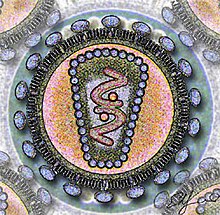User:Plantbella/Declaration of Sexual Rights
| This is the sandbox page where you will draft your initial Wikipedia contribution.
If you're starting a new article, you can develop it here until it's ready to go live. If you're working on improvements to an existing article, copy only one section at a time of the article to this sandbox to work on, and be sure to use an edit summary linking to the article you copied from. Do not copy over the entire article. You can find additional instructions here. Remember to save your work regularly using the "Publish page" button. (It just means 'save'; it will still be in the sandbox.) You can add bold formatting to your additions to differentiate them from existing content. |
Article Draft[edit]
Lead[edit]
The Declaration of Sexual Rights is a statement on sexual rights that was first proclaimed at the 13th World Congress of Sexology, run by the World Association for Sexual Health (WAS), in Valencia in 1997.[1] A revised version was approved in 1999 in Hong Kong by the WAS General Assembly, and reaffirmed in 2008. It was revised and expanded in 2015.[1]
Article body[edit]
Historical context[edit]

The Declaration of Sexual Rights was published after a series of efforts to acknowledge sexual rights, specifically the right to sexual pleasure, during and after the HIV/AIDS crisis.[2] Prior to its publication in 1999, sociologist, sex educator and American Humanist Lester Kirkendall published his 1976 book, "A New Bill of Sexual RIghts and Responsibilities."[3] Kirkendall's Bill of Sexual Rights and Responsibilities was signed by several American sexologists, many of whom revised and re-signed an updated declaration in 2003.[4] This bill of rights also placed an emphasis on sexual equity and pleasure.[4]
Latest version[edit]
The 2014 version names 16 positions: [1]
- The right to equality and non-discrimination
- The right to life, liberty, and security of the person
- The right to autonomy and bodily integrity
- The right to be free from torture and cruel, inhuman, or degrading treatment or punishment
- The right to be free from all forms of violence and coercion
- The right to privacy
- The right to the highest attainable standard of health, including sexual health; with the possibility of pleasurable, satisfying, and safe sexual experiences
- The right to enjoy the benefits of scientific progress and its application
- The right to information
- The right to education and the right to comprehensive sexuality education
- The right to enter, form, and dissolve marriage and similar types of relationships based on equality and full and free consent
- The right to decide whether to have children, the number and spacing of children, and to have the information and the means to do so
- The right to the freedom of thought, opinion, and expression
- The right to freedom of association and peaceful assembly
- The right to participation in public and political life
- The right to access to justice, remedies, and redress
Original version[edit]
The original, 1999 Declaration of Sexual Rights contained 11 positions: [5]
- The right to sexual freedom
- The right to sexual autonomy, sexual integrity, and safety of the sexual body
- The right to sexual privacy
- The right to sexual equity
- The right to sexual pleasure
- The right to emotional sexual expression
- The right to sexually associate freely
- The right to make free and responsible reproductive choices
- The right to sexual information based upon scientific inquiry
- The right to comprehensive sexuality education
- The right to sexual health care
Revisions[edit]
The declaration, in its original form, was created with the goal of defining sexual rights to the WAS' members and create a tool for the promotion of sexual rights at a governmental level.[6] The 2015 version was created with the intention of building upon established rights with international development goals and the sentiment that recognizing human rights plays an integral role in recognizing sexual rights.[6]
Reception[edit]
The declaration in its original form was accepted by LGBT+ news media as a "constitution for queers" and an aid to self-determination efforts after the AIDS crisis.[2]
Similar works[edit]

Other sources I will deal with in final version:
History [4]
References[edit]
- ^ a b c "Sexual Health for the Millennium". International Journal of Sexual Health. 20 (sup1): 1–104. 2008-11-25. doi:10.1080/19317610802477541. ISSN 1931-7611.
- ^ a b Wockner, Rex (11 December 1997). "A Declaration of Sexual Rights". Xtra! West. p. 13.
{{cite news}}:|access-date=requires|url=(help)CS1 maint: url-status (link) - ^ "Lester A. Kirkendall". www.nndb.com. Retrieved 2023-10-23.
- ^ a b c Bullough, Vern L (2004). "A declaration of sexual rights and responsibilities: evolving principles for a new century". Free Inquiry. 24 (5) – via GALE ACADEMIC ONEFILE.
- ^ "25th Congress of the World Association for Sexual Health (WAS) and SASHA (South African Sexual Health Association)". International Journal of Sexual Health. 34 (sup1): 1–331. 2022-01-28. doi:10.1080/19317611.2022.2017618. ISSN 1931-7611.
- ^ a b Kismödi, Eszter; Corona, Esther; Maticka-Tyndale, Eleanor; Rubio-Aurioles, Eusebio; Coleman, Eli (2017-09). "Sexual Rights as Human Rights: A Guide for the WAS Declaration of Sexual Rights". International Journal of Sexual Health. 29 (sup1): 1–92. doi:10.1080/19317611.2017.1353865. ISSN 1931-7611.
{{cite journal}}: Check date values in:|date=(help) - ^ Wahid, Ahmad; JInca, Muhammad Yamin; Rachman, Taufiqur; Malisan, Johny (2023-11-08). "file:///C:/Users/MDPI/Downloads/preprints-89923-manuscript_layout_done_pdf.pdf". dx.doi.org. Retrieved 2023-11-17.
